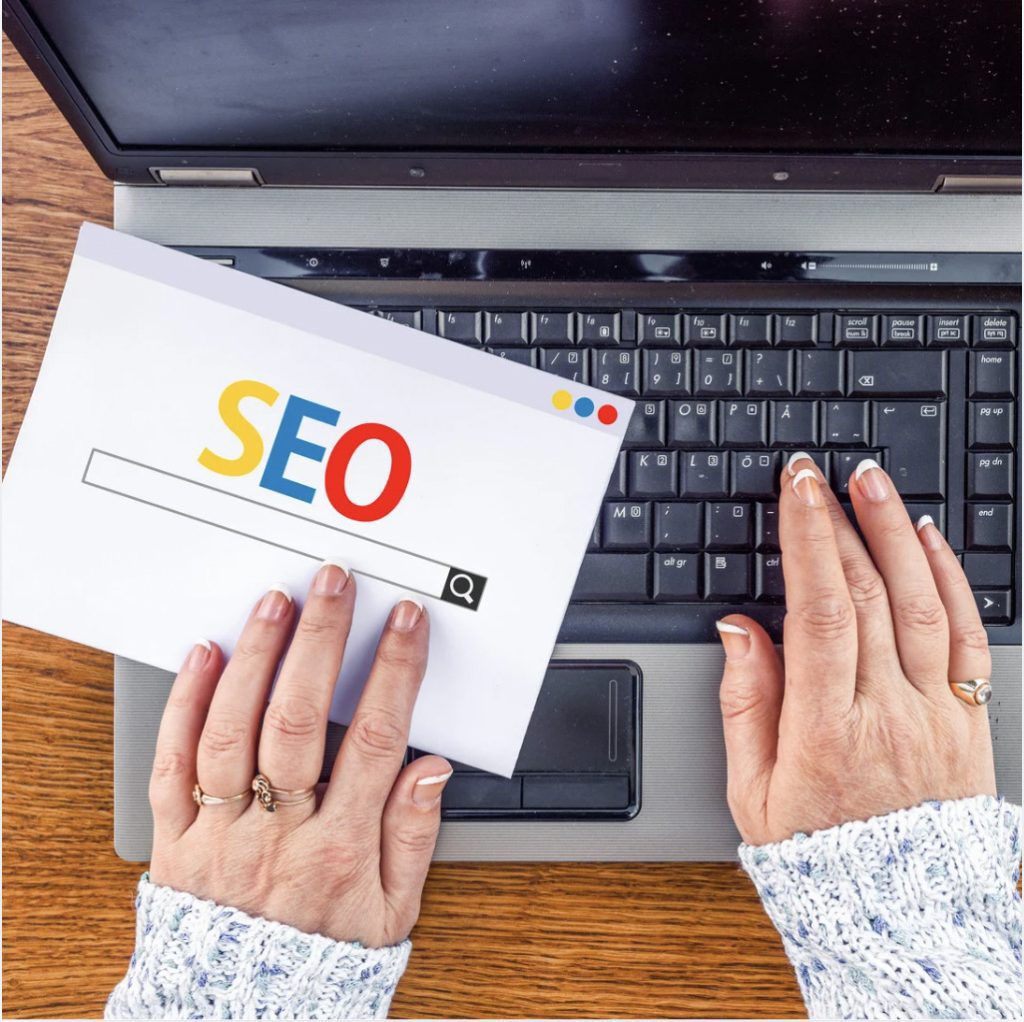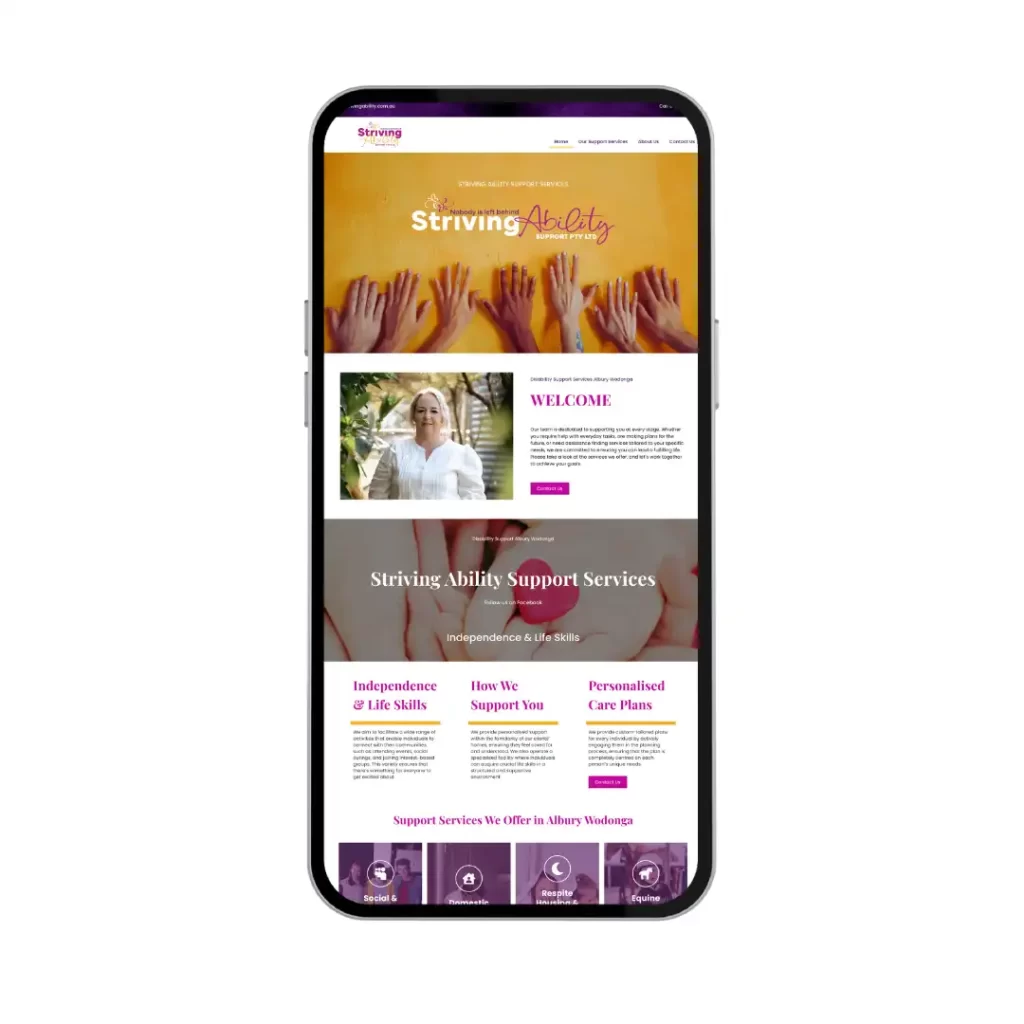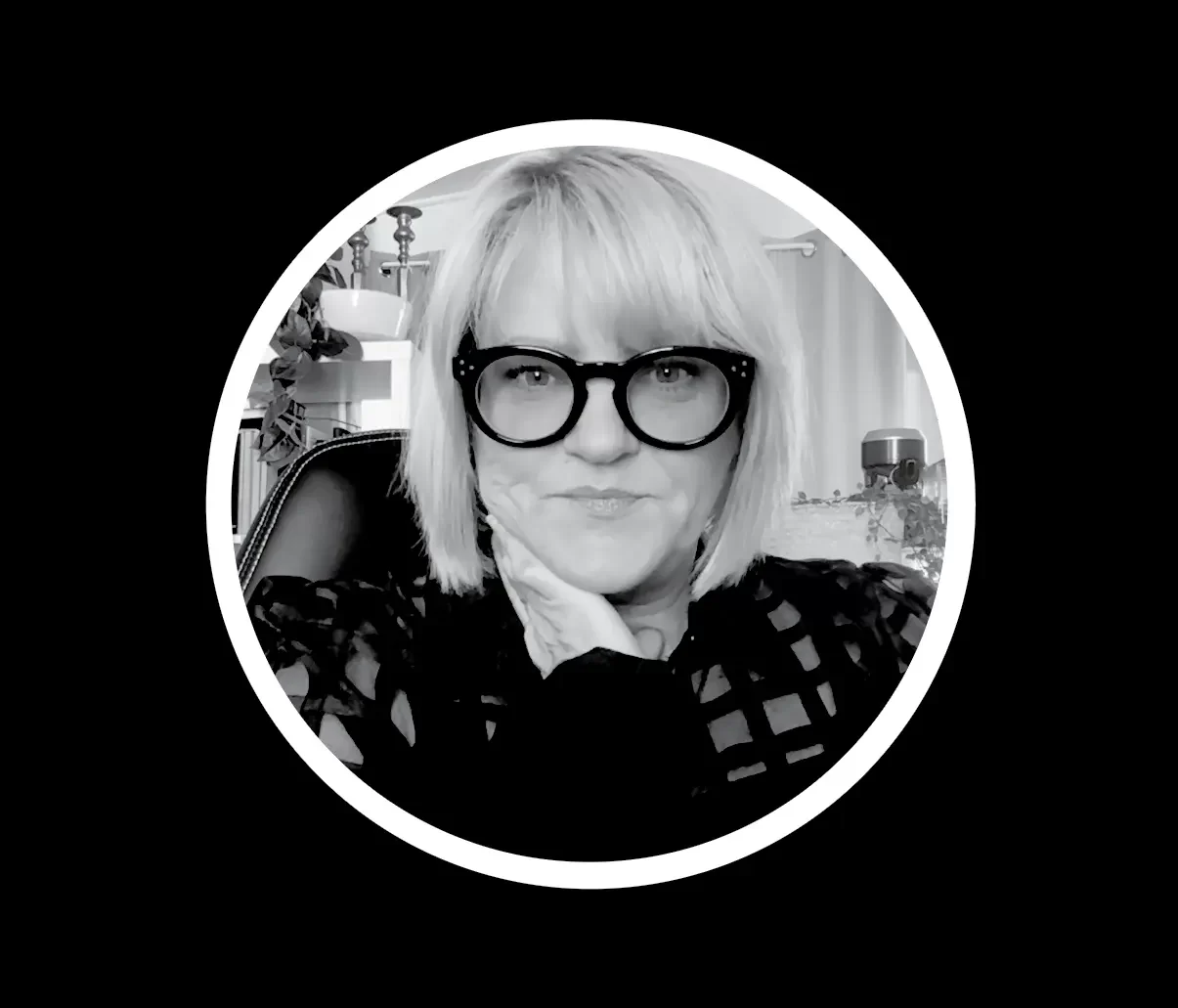
When we build a website, the whole purpose is so people know who we are, what we do, and how well we do it. We are solving a problem for our potential client, by offering the right solution to fix their problem, through a particular product or service.
What Are the Different Types of SEO?
There are 4-5 components to Search Engine Optimisation (depending if you have an e-commerce site it’s 5). Let’s break them down so you can understand how we maximise your site’s SEO.
When we build a website, the whole purpose is so people know who we are, what we do, and how well we do it. We are solving a problem for our potential client, by offering the right solution to fix their problem, through a particular product or service. Otherwise, what’s the point?
"When you search, Google looks through hundreds of billions of webpages and other digital content organized in our Search index to find helpful information - more information than all of the libraries of the world."
Hundreds of billions of websites. Wow. So how do we get noticed? How do we make sure that Google or Bing or whoever you use, is seeing us and ranking our site? SEO is one of the tools you need to use to make sure your not standing in the middle of a full stadium in your birthday suit, and nobody is noticing you.
Whether you’re running a small business or a large corporation, SEO is an essential part of how you get your website noticed. There are different types, so let’s break them down so you can understand not just how they work so you can start to implement some strategies to get them working for you.

My SEO Analogy
Using a business person to explain SEO concepts can make it much easier to understand.
Meet Karen – Karen owns her own business called Karen’s Kit’s. Karen sells kits to local businesses.
Let’s break it down by expanding on that analogy:
ON PAGE SEO
OFF PAGE SEO
TECHNICAL SEO
LOCAL SEO
E-COMMERCE SEO
The Analogy: A business person, on-page SEO is like how they present themselves to the world.

ON PAGE SEO
1. On-Page SEO: The Stuff You See
On-page SEO is what most people think of when they hear “SEO.” It’s the practice of optimising the parts of your website that users directly interact with—basically, the content on your pages.
What does On-Page SEO involve?
Keywords
These are the words or phrases people are typing into search engines. Think about what words you type in when you are looking for a product or service.
Finding the right keywords (through keyword research) is essential because search engines like Google match these keywords with content to display the most relevant results. For example, if you’re a graphic designer like me, you’ll want to use terms like “graphic design services Queensland” or “web design for small business.”
But all Keywords are not created equal! They have different values like easy, medium and hard. Hard means that a lot of business are using that particular keyword and of course, that it’s harder to rank for. Then its a whole different ball game of how you use that keyword on your site. But be careful, Google will punish you for “keyword stuffing”. This is something you need to monitor, check out what the competition is doing, and adjust your plan of attack.
Content Optimisation:
The actual text on your pages needs to be optimised for both humans and search engines. This includes having high-quality content that provides value to readers. It’s not just about stuffing as many keywords as possible into the page (which, by the way, Google hates), but making sure that your content is well-written, informative, and easy to read.
Headers, Meta Titles, and Descriptions:
These are the parts of your page that people do see, but are a also huge part of SEO finds your page and information. This is essential for search engines to know exactly what your page is about. It tell’s search engines what is on that page, and why it’s important.
When you do a search on Google, websites come up with a title and a description under them. The Title of that page is what you see in the list of what you have searched for. For example: Company XYZ | Providing the Best XYZ Solutions. Under that title (which is the name of the title on that page you put in on your website), will have a few lines of text about the company. This is the Meta Description that you have entered into your website about that particular page.
Meta titles and descriptions tell search engines and your ideal client, what the page is about. This is where your keywords are important, because the main keyword you want to rank for needs to be in that title and meta description. I will go into this in more detail in another blog.
Without good on page optimisation, even the best marketing efforts will struggle to get noticed.
The Analogy: Off-page SEO is like the business person’s reputation and networking. It’s all about the connections they build and how others perceive them.

OFF-PAGE SEO
2. Off-Page SEO: What Happens Away from Your Website
Off-page SEO is all the work you do outside of your website so you can improve its visibility and ranking. You have to build a business profile so people know who you are what you do, and how well you do it. You are crafting a reputation and proving to search engines that your site is trustworthy, just like your business is.
What does Off-Page SEO involve?
Backlinks
These are links from other websites to yours. And probably this takes the longest time to build. Every website has an authority level and a page level (I will cover backlinks in a more detailed blog). If you think about Instagram, you look at the number of followers people have, and the quality of those followers. Are they genuine followers, who has someone paid for them (which most people can spot a mile away). It’s exactly the same with backlinks.
The more quality backlinks, the more search engines will trust your site. BUT not all backlinks are created equal. So if you get a link from a highly respected site, that will carry a higher domain level, it will be more valuable than one from any generic website. You will most likely be offered many backlinks for free or cheaply, but they are worthless, just like those fake Instagram followers.
Your Social Media
While this isn’t going to make or break you SEO’s, social media can be a strong a ranking factor as backlink. Your social media content can indirectly influence your website’s authority. If people are sharing your content widely, it indicates that your website is seen as valuable and worth spreading. Social media activity—likes, shares, and mentions can help search engines like Google, understand your websites valuable content and influence its authority level.
Blogging
Writing articles for other reputable websites in your industry can also help boost your site’s credibility. If they link back to your website, that counts as a quality backlink.
Off-page SEO is all about trust and credibility. It absolutely takes time and a lot of patience but it’s an essential part to grow your SEO strategy.
The Analogy: Technical SEO is like the business person’s health and body functions—the parts that people don’t see, but that make everything run smoothly.

TECHICAL SEO
3. Technical SEO: The Behind-the-Scenes Work
While on-page and off-page SEO deal with the things people can see on your website, technical SEO is what goes on in the background. It focuses on how well your website works and how easy it is for search engines to crawl and index your content.
What does Technical SEO involve?
Site Speed
Speed Matters. People who have to hang around for a site to load will give up if it takes to long. So we all prefer fast-loading websites. If your website is slow Google will penalise you for it. And Google uses your mobile speed before it looks at your desktop speed.
Optimising images, reducing redirects, and using faster hosting can all help speed up your site. This means things like the size and format of your images, the type of image files you use, caching, coding issues, all the stuff you need to make your website work. Three seconds is the maximum to load. I looked at a website 2 days ago that took 14.3 seconds to load on mobile!
Mobile Optimisation
With most web traffic now coming from mobile devices, Google uses mobile-first indexing. Your mobile website is what Google uses to determine its RANKING. This means it considers the mobile version of your site more important than the desktop version. Making sure your site looks and works well on smartphones and tablets is crucial for good SEO.
HTTPS V HTTP
Your site needs a security certificate! This is technology that encrypts data between your website and its visitors. Having an SSL certificate is now a ranking factor for Google, and users are more likely to trust a site with a secure “https” URL than one with “http”. In fact some browser will warn if your going to a site without SSL or just block the site completely.
Sitemaps and Crawlability
You need to be easy for search engines to find you. You have to make a great friend out of Google. This means giving search engines a map of where you are, and what you are doing. Google sends out its little spies (called bots), that check out your sitemap, so it can read your website easily.
A sitemap is search engines guide so they can easily find you and understand all the pages and information you have on your site. Technical SEO also ensures that your site is structured in a way that makes it easy for these bots to navigate and get the information quickly.
Technical SEO is essential for making sure that your site runs smoothly and that search engines can find, crawl, and index your pages efficiently, so you can be seen.
The Analogy: Local SEO is like where the business person lives and works—their neighbourhood, city, or region. Just as being in the right location is important for a business person to meet clients and build local relationships, local SEO is vital for businesses that serve a specific geographical area.

LOCAL SEO
4. Local SEO: Optimising for Your Location
Local SEO is especially important if you’re a small business that serves a specific geographic area (like me in Queensland). It’s all about making sure your website shows up when people nearby search for your services or products. Even if you provide a service nationally, you need to let search engines know that.
What does Local SEO involve?
Google My Business (GMB) Now Business Profile Manager
It still amazes me how many people don’t have a Business Profile which is a free service by Google, when it’s key to local SEO. For any website I build or rebuild, I do this as a part of my service.
A GBP makes sure that your business shows up in local search results, including Google Maps. So if your website isn’t ranking highly due to competition, a profile in maps in your local area may list you in the top 3.
Make sure your business information—address, phone number, hours of operation—is up to date. Include details of the services you offer, add your social media profiles, and use keywords from your website in your profile as well. Check on your profile regularly to make sure its update and competitors haven’t added services you don’t offer (this does happen!). You can also link your social media to post to your profile with current project and images that you have been working on. You can also give your customers a link to your profile to leave valuable reviews as well.
Local Keywords
Instead of just targeting general keywords, you need to use keywords and phrases that include where your business is located. For example, instead of just “graphic design services or logo design services,” I would include my location. I would use “graphic design services on the Sunshine Coast, or logo design services in Caloundra.”
Citations and Customer Reviews
These are also listings or mentions of your business on other websites. For example, where you may have listed your business in local directories like Yellow Pages, Yelp, Hot Frog etc. There are a lot of these listing services that are 100% free for you to list your business on. It’s like showing your ID and verifying your location and service area for search engines.
Reviews are also important, of course, the positive ones are the best, and can lift the ranking of your website. My client Peak Plumbing and Gas and Peak Civil had cards made up with the link to their Google Business Profile that staff could hand out to clients. A very clever idea.
Local SEO is critical for businesses that rely on local customers and is probably one of the easiest SEO tools available. Even though time consuming, listing your business with all your free local business listing service helps ensure that you show up when people nearby search for one of the services you offer.
The Analogy: If the business person runs an online store, e-commerce SEO is like how they organise and present their products.

E-COMMERCE SEO
5. E-Commerce SEO: Helping Online Stores Get Found
If you run an online store, e-commerce SEO is all about making sure your products show up in search results. This involves having great product pages and category pages so that your target customers can find exactly what they’re looking for.
What does E-Commerce SEO involve?
Product Descriptions
Each product on your site needs a unique description based on strong keyword analysis that clearly explains what it is and how it can provide a excellent solution to your ideal clients problem. Now, more than ever, we are competing with cheaper international companies that provide very cheap services or products. And they have the resources to work their SEO’s and get our attention before our local companies do. Buy LOCAL!
Category Pages
These should be optimised for broader and more generic keywords. For example, if you sell shoes, a category page might target “Christmas decorations”. When planing your websites layout, implementing a keyword strategy before anything else will be your best friend. We aren’t just winging it here.
User Experience (UX)
Making sure that customers can easily use your sites navigation will make or break you here. Your ideal client needs to find what they’re looking for and be able to make that purchase easily. They need to be able to go back and forth throughout the site in one simple step. Think about Ebay. There is clear navigation at the top of your page so you know exactly where you are on that website.
If you can’t get around website easily, your not going to convert your ideal clients to ideal customer sales.
WARNING!! Be aware, this is not a complete checklist to rank higher. There are many other factors that come into play such as keyword difficulty, the quality of content on your website, the number of words, your competition and so much more.
SEO is like putting together a large puzzle that consists of man pieces that all need to be placed correctly to show the completed image. They work together to improve your website’s visibility and ranking.
On-page SEO optimises the content your visitors see, off-page SEO builds credibility through backlinks, technical SEO ensures your site runs smoothly, local SEO helps you target nearby customers, and e-commerce SEO is crucial for online stores.
By understanding how each part or component works when you put your plan into place for each type of SEO, you can create a successful strategy that will show you results in the long run. And like all good things, it will take time.

By Anna McKenzie
Sahara Studio
SEO Specialist
More Insights

A Case Study in Branding
Laura Scott, a respected neuropsychologist based in Victoria, Australia, approached me with a unique challenge. She needed a cohesive branding identity that could effectively communicate to both the professional legal industry, where she presented reports, and her clients, many of whom suffered from brain injuries.

Do I need a multi or single page website for the best SEO?
Do I need a multi or single page website for the best SEO? Do I need a multi or single page website for the best

What Type of Logo Design Do I Need?
What Type of Logo Design Do I Need? Choosing the right logo design is crucial for any business. However, for small businesses, it can be

